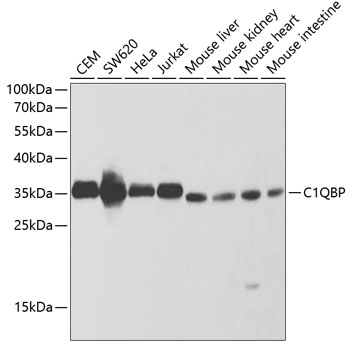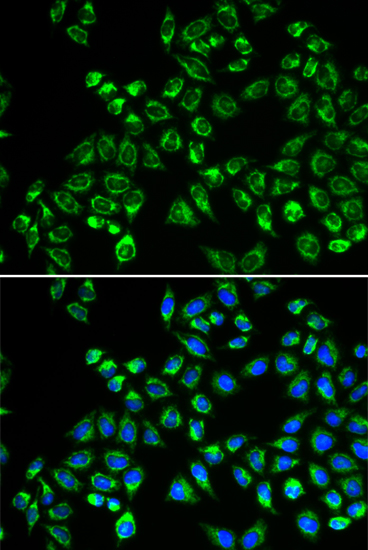C1QBP, also referred to as p32, p33, gC1q receptor (gC1qR), and hyaluronic acid binding protein 1 (HABP1), was originally identified via its binding interactions with Splicing Factor (SF-2) (1). Multiple, diverse binding partners of C1QBP were subsequently identified, including the globular heads of complement component C1q, hyaluronic acid, selected protein kinases (2), the tumor suppressor ARF (3-5), and multiple antigens of bacterial and viral origin (6). Research studies have shown that C1QBP is overexpressed in a number of cancer cell types (7), and has been implicated in the Warburg effect, whereby cancer cells shift their metabolism from oxidative phosphorylation to glycolysis (7). C1QBP has also been shown to inhibit the Mitochondrial Permeability Transition (MPT) pore, possibly serving a protective function against damage from oxidative stress (8).


